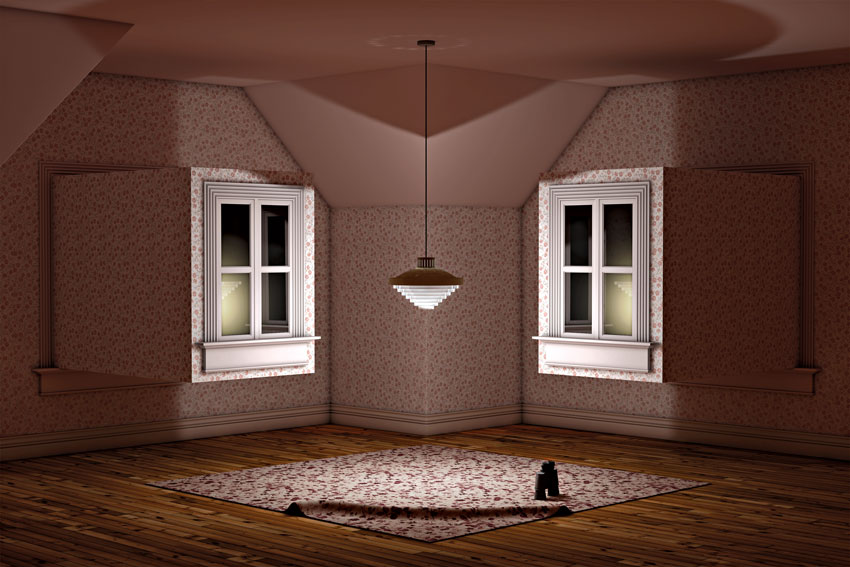
From Jean Talon to Lenin's Tomb
On our first day in Montreal this summer, my girlfriend suggested that we visit a vegan restaurant in the Plateau that she had read about but whose name she could not remember. We were staying with my sister and her boyfriend, and the boyfriend said that he knew the place and at one time had rented a studio from the owner. Then he told us the story of a horrific accident that had happened a few years before when one of the staff at the vegan restaurant got his hand caught in the feeder of a pita-making machine. When the paramedics arrived they found the man conscious, seated in a chair with his arm stuck all the way up to the elbow inside the feeder. Unable to dislodge the man’s arm, the paramedics considered calling in a surgical team to amputate the man’s arm right there in the kitchen of the vegan restaurant, but then they set to work dismantling the pita machine and were able to detach the feeder. Then they drove the man, with his arm still stuck in the feeder, in the ambulance to the Notre Dame hospital, where eventually the man’s hand was amputated.
That evening we decided to make our own dinner and so we walked down to the Jean Talon market and bought radishes, tomatoes, smoked herring, sheep cheese, goat cheese, fava beans, pork pâté, baguette, morel mushrooms and Polish donuts filled with rose hip jam.
The pita machine story, my girlfriend said, made her think of the time she rode the Trans-Siberian train from Beijing to Moscow, crammed in a tiny compartment with a Mongolian family of five, who, upon boarding the train, unpacked from their luggage a link of sausages, which they strung from the top bunk, and a skinned sheep head, which they placed on the lone table in the compartment. My girlfriend said she thought the sheep head had been boiled, on account of the slightly grey tinge of the meat, and though she was repelled by the sight of the head, she said the smell didn’t bother her at all. At dinner hour, the mother would slice morsels off the sheep head and pass them around to her children and husband. This, along with the sausages, was the only thing my girlfriend saw the family eat over the course of the five-day journey. The family slept two to a bunk, and the smallest child slept in the luggage rack above the door. At each stop on the Trans-Siberian route the family hung blankets out the window for sale to the Siberians who came to meet the train. As my girlfriend remembers it, the sheep head had reduced in size by about a third when the train finally reached Moscow.
The reason she had taken the Trans-Siberian train, my girlfriend explained, was to see the embalmed remains of Mao Zedong in Beijing and Vladimir Ilyich Lenin in Moscow and when she arrived in Moscow, having eaten only noodles on the nearly week-long train ride, she went straight over to the McDonald’s in Pushkin Square not far from the train station and ordered a Filet-O-Fish.
In front of Lenin’s mausoleum in Red Square, a Lenin impersonator posed for photographs for five bucks a shot. He was a friendly, stout middle-aged man who bore a striking resemblance to Lenin, with a goatee, dressed in a black cap and a suit jacket with a red ribbon pinned to the breast. The really shocking thing about him, my girlfriend said, was just how short he was.
Inside the mausoleum, the lights were turned down; a single spotlight shone on Lenin’s face. Photography was forbidden. In fact, no one was even permitted to stop to look at the body, but rather had to shuffle past a few metres away from the tomb, making it difficult to see the details of Lenin’s face. Postcards with an image of Lenin’s tomb were available in the gift shop. When my girlfriend saw Lenin’s corpse, it had been lying on display in the Mausoleum for more than seventy-five years—save for two years during World War II when it was taken to Siberia—and Lenin had been born more than 130 years before.
When Lenin died in 1924 his brain was removed and stored in formaldehyde for two years, and then it was shipped off to Berlin to be studied by a German neuroscientist, charged with proving by scientific examination that Lenin was a genius. The brain, sliced into 31,000 cross sections, is now housed at the Brain Institute in Moscow, along with the brains of other famous Soviet thinkers.
On our second day in Montreal, my sister and I walked down to the Polish deli on Rue Saint Viateur, where they serve the best Polish food in Canada. My sister ordered the cabbage rolls and I ordered a bowl of tripe soup, with carrots and marjoram and narrow strips of stomach lining floating in a clear broth, the way they serve it back in the old country, and the idea struck me that Montreal is one of those rare Canadian places where one can eat tripe soup in public without feeling self-conscious.
That first night in Montreal my sister’s boyfriend had said that the man whose hand was caught in the pita machine was having a hard time gaining compensation from the vegan restaurant because there had been plenty of signage warning staff to use extreme caution around the machine. When I got back home I looked up the story and found nothing about compensation, but I did see several articles reporting that the spokesperson for Urgences-Santé in Montreal had erroneously said that the man’s “arm got caught in a, what we would describe I guess as a meat grinder—a hachoir.”




.jpg)



